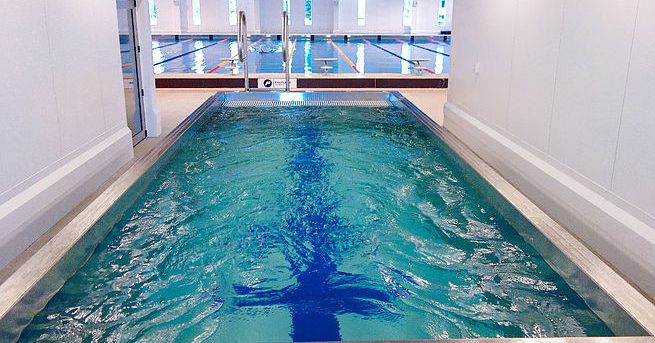Natare Blog
Pool Design and Construction: Common Q&A When Building a Therapy Pool
Starting a new pool project can be a challenge, especially when it needs to offer therapeutic benefits to you or your clients. We get a lot questions about the design, selection and creative process involved in choosing a therapy pool. Our experienced consultants have heard and seen it all and are here to help answer your toughest questions.
Here are a few common discussions that typically occur:
1. Our facility is thinking about adding a Fitness/Wellness Center. Where do we start?
Adding a pool of any type to a facility requires extensive thought and preparation. A therapy pool is a long-term investment that can’t easily be changed once built. Not only do design choices need to be made, but forecasts of facility needs, program implementation and maintenance requirements have to be considered.
Fortunately, although this decision process may be new to you, it’s not new to us! We have been designing special purpose pools and spas for decades. We have developed a thorough knowledge of the unique requirements needed in an aquatic therapeutic environment.
2. What guidelines are there for designing a swimming or hydrotherapy pool for therapeutic or clinical use?
Your state and local health codes generally mandate many factors that affect the design of a swimming pool in a clinical or therapeutic environment. Natare can help you to interpret these codes when considering your design.
Health department officials will be concerned with safety, cleanliness and water quality (physical dimensions and other traditional guidelines are not normally mandated).
3. How big is a therapy pool supposed to be? What should it look like? What features should it incorporate?
This is the fun part. These decisions are not set in stone, nor are there any absolute standards. Your particular needs will govern the choices that you make. No two therapy pools are typically alike. Each pool must be unique and individually planned for a custom fit to your facility.
We believe the design process should start with preliminary discussions which include your therapists and other staff personnel. They will have valuable ideas regarding what they need to provide better care for your patients.
Pool size and shape is usually a result of program needs, space available and budget constraints.
Features of a therapy pool can include hydrotherapy, varying terraced depths, temperature modulation, underwater exercise equipment, submerged walking tracks, underwater viewing/video windows, handicapped access equipment and submerged or surface-level parallel and ballet bars.
4. What about recirculation, filtration and water chemistry? I don’t know anything about these areas. Do we have to become experts in order to have a therapy pool?
The technical considerations regarding filtration, recirculation and water chemistry will be thoroughly engineered by Natare before the pool is ever built. We will make sure your equipment is sized properly to ensure sparkling clean water and patient comfort.
Systems from Natare provide years of trouble-free service with minimal upkeep and maintenance. Additionally, we can provide automated operation and chemistry control systems that make daily pool maintenance hassle free.
Most facilities will have a person responsible for the overall operation of their pool; with our help this will not be a full-time job, it will only require occasional responsibilities.
5. Most pools I’ve been in are constructed of concrete. Is this the method of construction you recommend for therapy pools?
Our experience has shown us that concrete pools require regular involved maintenance and upkeep. Cracking, spalling and frequent patching, painting and plastering are at least yearly events.
Stainless steel has a non-porous surface that inhibits the growth of bacteria, which is extremely important in medical environments.
Natare pools are aesthetically pleasing, hygienic, low maintenance and long-lasting. The stainless steel surface of the pool can also be covered with a colorful PVC lining or even ceramic tile or stone.
6. We want a therapy pool in our facility, what is the next step?
Tell us your needs, wants and wishes. We can help transform your vision and practice requirements into reality.
You will find that a few suggestions from us can help get you started with your thought processes and design considerations. Any particular problems or areas of concern can also be discussed, as they are likely situations that we have encountered with other therapy pool projects.
7. What kinds of general comments can you offer about the planning, design and construction of a therapy pool?
Recognize the inevitable compromise that will occur. No matter what final pool design is chosen, it’s most likely that not everyone involved with the project is going to get every feature that is important to them.
Not only are budgets usually restrictive, but some design features such as temperature, size, depth and layout can prevent other therapy pool features from being incorporated.

Still have questions? Contact us about your therapy pool project!

